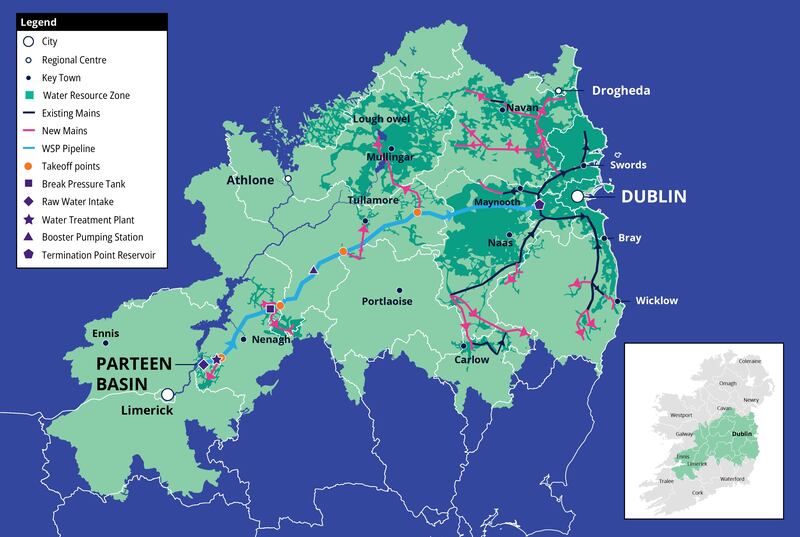The Cabinet has approved the next stage in the multibillion project to pipe water from the river Shannon to the Dublin region, which enables Uisce Éireann to seek planning permission for one of the largest infrastructure projects in the history of the State during 2025.
Delivery of the Water Supply Project, Eastern and Midlands Region, expected to be met in the next 10 years, was critical to sustainable economic growth, enabling housing delivery and attracting investment to support Ireland’s growing population over coming decades, the utility said.
It had “the capacity to ensure secure sustainable water supplies for up to 50 per cent of the population”, it added.
The Government approved the project in principle under its infrastructure guidelines. It has yet to be costed but is expected to cost up to €6 billion with a construction timeline of four-five years subject to planning.
READ MORE
The pipeline would create a water spine across the country which would ensure supplies to towns and regions from Tipperary to Dublin and Carlow to Drogheda, it added. The project has met opposition, especially in the vicinity of Lough Derg with some local farmers objecting to the proposed route.

A maximum of 2 per cent of the average flow of the Shannon is due to be extracted with treated water piped 170km to a termination point reservoir at Peamount in Co Dublin.
Minister for Housing Darragh O’Brien said the decision allowed for the submission of a planning application to An Bord Pleanála next year. “This marks an important first step in what is a multibillion euro project which will ensure a sustainable water supply for our country both now and into the future,” he added.
Uisce Éireann chief executive Niall Gleeson said it would facilitate increased demand for housing, enable sustainable economic growth and support competitiveness across the region.
“Crucially it will also help us meet the challenges of climate change by diversifying our water supplies to ensure safe, resilient water services for communities across the region, and reduce the vulnerability to drought and other extreme weather events,” he added.
Currently water supply in the eastern and midlands regions faces serious challenges, notably over-reliance on the river Liffey to supply 1.7 million people in the Greater Dublin Area.
Dependence on that source (and its two main treatment plants at Ballymore Eustace and Leixlip) results in a vulnerability to risks such as prolonged drought and/or contamination. With forecasts showing the region would need 34 per cent more water by 2044 than available today, this combination of a growing water supply deficit and lack of supply resilience was not sustainable, Uisce Éireann said.
- Sign up for push alerts and have the best news, analysis and comment delivered directly to your phone
- Join The Irish Times on WhatsApp and stay up to date
- Listen to our Inside Politics podcast for the best political chat and analysis











